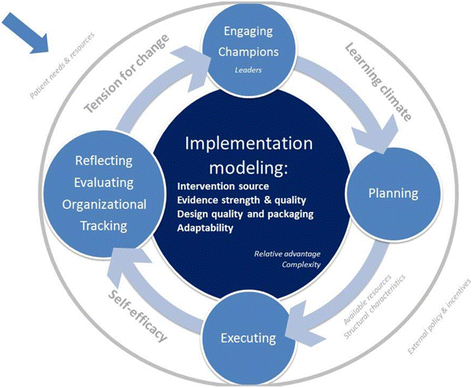The implementation of health promotion in primary and community care: a qualitative analysis of the 'Prescribe Vida Saludable' strategy
- PMID: 28212606
- PMCID: PMC5316200
- DOI: 10.1186/s12875-017-0584-6
The implementation of health promotion in primary and community care: a qualitative analysis of the 'Prescribe Vida Saludable' strategy
Abstract
Background: The impact of lifestyle on health is undeniable and effective healthy lifestyle promotion interventions do exist. However, this is not a fundamental part of routine primary care clinical practice. We describe factors that determine changes in performance of primary health care centers involved in piloting the health promotion innovation 'Prescribe Vida Saludable' (PVS) phase II.
Methods: We engaged four primary health care centers of the Basque Healthcare Service in an action research project aimed at changing preventive health practices. Prescribe Healthy Life (PVS from the Spanish "Prescribe Vida Saludable) is focused on designing, planning, implementing and evaluating innovative programs to promote multiple healthy habits, feasible to be performed in routine primary health care conditions. After 2 years of piloting, centers were categorized as having high, medium, or low implementation effectiveness. We completed qualitative inductive and deductive analysis of five focus groups with the staff of the centers. Themes generated through consensual grounded qualitative analysis were compared between centers to identify the dimensions that explain the variation in actual implementation of PVS, and retrospectively organized and assessed against the Consolidated Framework for Implementation Research (CFIR).
Results: Of the 36 CFIR constructs, 11 were directly related to the level of implementation performance: intervention source, evidence strength and quality, adaptability, design quality and packaging, tension for change, learning climate, self-efficacy, planning, champions, executing, and reflecting and evaluating, with -organizational tracking added as a new sub-construct. Additionally, another seven constructs emerged in the participants' discourse but were not related to center performance: relative advantage, complexity, patients' needs and resources, external policy and incentives, structural characteristics, available resources, and formally appointed internal implementation leaders. Our findings indicate that the success of the implementation seems to be associated with the following components: the context, the implementation process, and the collaborative modelling.
Conclusions: Identifying barriers and enablers is useful for designing implementation strategies for health promotion in primary health care centers that are essential for innovation success. An implementation model is proposed to highlight the relationships between the CFIR constructs in the context of health promotion in primary care.
Keywords: Community Health Services; Complex Interventions; Health Promotion; Implementation Research; Organizational Innovation; Pilot Implementation; Primary Health Care; Program Evaluation; Qualitative Research.
Figures
References
-
- Lim SS, Vos T, Flaxman AD, Danaei G, Shibuya K, Adair-Rohani H, et al. A comparative risk assessment of burden of disease and injury attributable to 67 risk factors and risk factor clusters in 21 regions, 1990–2010: a systematic analysis for the Global Burden of Disease Study 2010. Lancet. 2012;380(9859):2224–60. doi: 10.1016/S0140-6736(12)61766-8. - DOI - PMC - PubMed
-
- Dahlgren G, Whitehead M. Policies and strategies to promote social equity in health. Stockholm: Institute for Future Studies; 1991.
-
- Grandes G, Sanchez A, Cortada JM, Balague L, Calderon C, Arrazola A, et al. Is integration of healthy lifestyle promotion into primary care feasible? Discussion and consensus sessions between clinicians and researchers. BMC Health Serv Res. 2008;8(1):213. doi: 10.1186/1472-6963-8-213. - DOI - PMC - PubMed
Publication types
MeSH terms
LinkOut - more resources
Full Text Sources
Other Literature Sources
Medical
Research Materials



